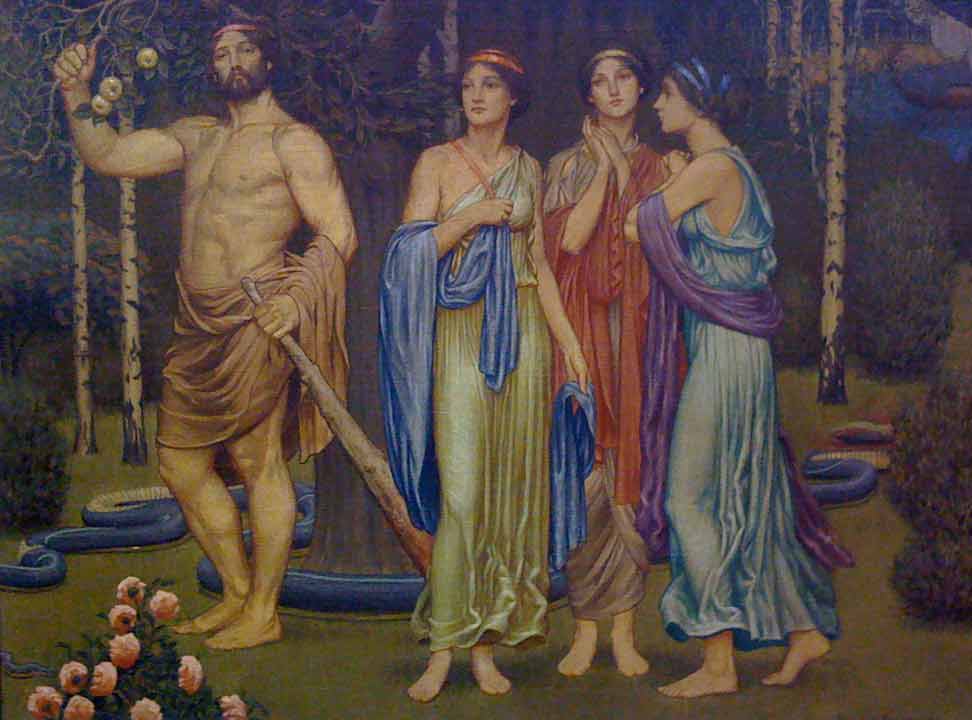

ROBERT KNIGHT RYLAND
"HERCULES IN THE GARDEN OF THE HESPERIDES"
OIL ON CANVAS, SIGNED
AMERICAN, DATED 1910
50 X 70 INCHES
Robert Knight Ryland 1873-1951 Robert Ryland was born in Grenada, Mississippi on February 10, 1873. He studied at the Bethel College in Kentucky, as well as at the Art Students League, the National Academy of Design in New York, and the American Academy in Rome. He lived in Brooklyn and in Russellville, Kentucky. Ryland was a muralist, painter and illustrator, he was known for his work as a New York World's Fair Artist, 1939-40. He exhibited at the Salon des Independents in 1917, the National Academy of Design in 1924, where he was awarded a prize, the Corcoran Gallery biennials in 1926 and 1937, City Art Museum of St. Louis, Art Institute of Chicago in 1926, the Pennsylvania Academy of Fine Art in 1927 and 1935, and the Brooklyn Museum. As an illustrator, he contributed to McCall's magazine, Delineator, and Everybody's magazine in 1922, 1923. Ryland also worked for the Tiffany studios. Ryland was a member of the Salmagundi Club, the National Society of Mural Painters, the Artists Guild of the Authors League of America. His various awards include: the Lazarus European Scholarship, the Altman Prize, the National Academy of Design, and an honorable mention form the Art Institute of Chicago. Ryland’s work is represented in the collections of the Newark Museum, the Syracuse Museum of Fine Art, the Strong Museum in Rochester and the Supreme Court of New York. He died in 1951 in Washington, DC. Note: This painting represents a scene from Greek mythology. The male figure is Hercules and the three female figures represent the Hesperides, or the Nymphs of the Setting Sun. They are called Aegle (‘Brightness’), Erythia (‘Scarlet’) and Hesperarethusa (‘Sunset Glow’). The Hesperides are said to have lived in the extreme west near the edge of the Ocean at the foot of Mount Atlas. Their main function, with the help of a dragon, Ladon (here shown as a colossal blue serpent), was to guard the garden where the golden apples grew. These apples were were a gift given to Hera from Gaia as a wedding gift when she married Zeus.
This scene shows a moment from the Twelve Labors of Heracles, a series of tasks carried out by Heracles at the bidding of his cousin Eurystheus; a way of atoning for murdering his own children and also a means of gaining immortality. The Eleventh Labor required Heracles to steal the apples from the garden of the Hesperides. The exact moment portrayed is after he has slain Ladon and takes the golden apples. After this the Hesperides were turned into trees, elm, poplar and willow, because of their despair at the loss of the apples. |